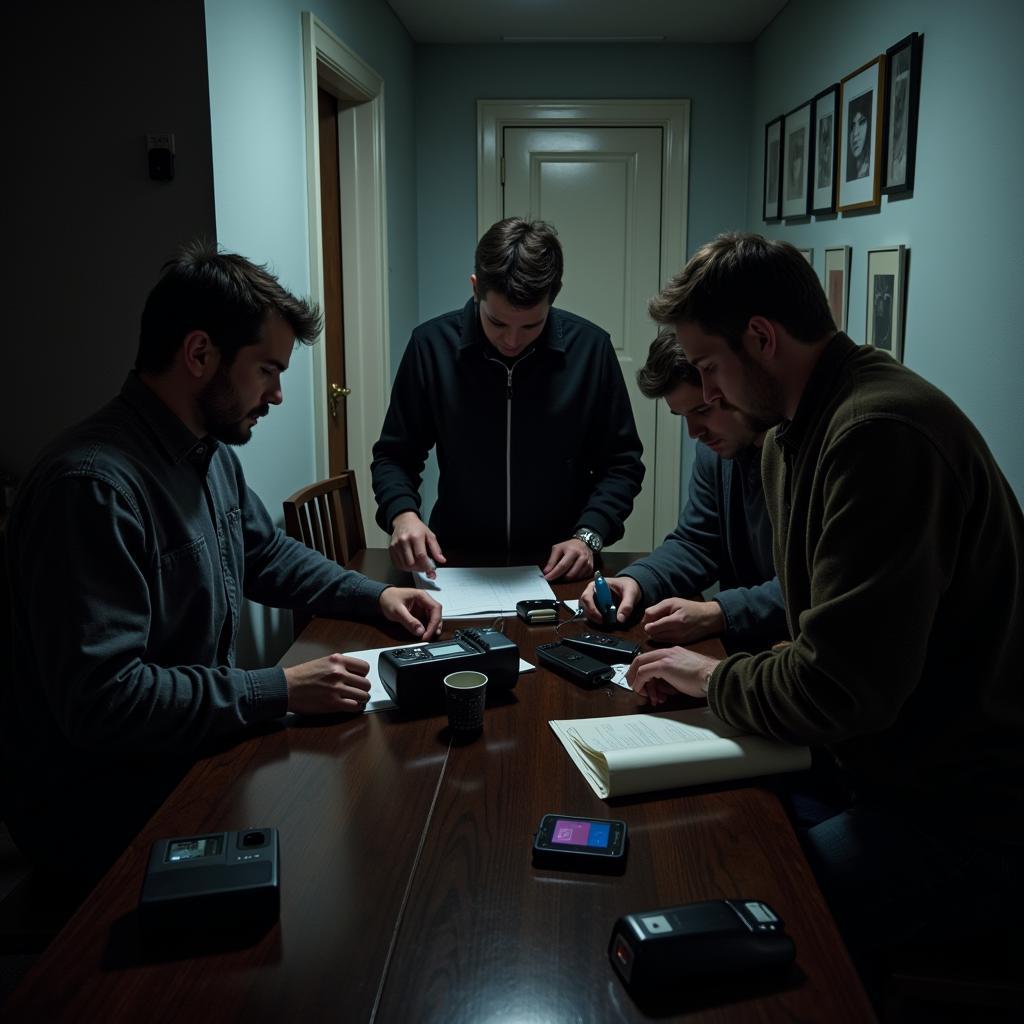Delving into the world of the unexplained often involves grappling with the unknown. When we talk about “Nomothetic And Idiographic Research”, we’re talking about the very foundation of how we investigate paranormal phenomena. These approaches offer distinct pathways to understanding the mysteries that lie beyond our immediate comprehension.
Nomothetic Research: Seeking Universal Laws in the Paranormal
Imagine trying to understand why a ghost might haunt a particular location. A nomothetic approach would focus on identifying general principles or patterns that could explain a wide range of hauntings. It’s about seeking universal laws or theories that apply broadly across different cases.
Key Characteristics of Nomothetic Research:
- Quantitative Data: Relies on numerical data, statistical analysis, and large sample sizes. Think EMF readings, temperature changes, or the frequency of apparitions reported across multiple locations.
- Generalizability: Aims to produce findings that can be generalized to a larger population of paranormal events.
- Objectivity: Strives for unbiased, objective measurements and analysis to minimize subjective interpretation.
 Nomothetic Research in Paranormal Investigations
Nomothetic Research in Paranormal Investigations
Example: A nomothetic study might investigate whether certain environmental factors, like electromagnetic fields, correlate with increased reports of paranormal activity across numerous haunted locations.
Idiographic Research: Embracing the Unique Puzzle of Individual Cases
In contrast, idiographic research digs deep into the individual nuances of a specific paranormal event or experience. Think of it as piecing together a complex jigsaw puzzle – each piece (or detail) is crucial to understanding the bigger picture.
Key Characteristics of Idiographic Research:
- Qualitative Data: Focuses on rich, descriptive data, often gathered through interviews, personal accounts, and historical records.
- Uniqueness: Acknowledges that each paranormal event is unique and influenced by its specific context.
- Subjectivity: Embraces the subjective experiences of witnesses and the importance of individual perspectives.
 Idiographic Research: Paranormal Case Study
Idiographic Research: Paranormal Case Study
Example: An idiographic investigation might involve conducting in-depth interviews with individuals who claim to have witnessed a UFO sighting, analyzing their testimonies alongside historical weather data and local folklore.
Which Approach is “Better”?
There’s no definitive answer to which approach is superior. Both nomothetic and idiographic research contribute valuable insights to the field of paranormal investigation.
- Nomothetic research helps establish potential patterns and general theories, providing a framework for understanding broader phenomena.
- Idiographic research reminds us that every paranormal encounter is unique and deeply personal, urging us to consider the intricate details and subjective experiences that shape these events.
Finding Harmony in the Paradox
The most fruitful path often lies in blending both approaches. By combining quantitative data with qualitative narratives, researchers can develop a more comprehensive and nuanced understanding of the paranormal.
For example, investigating a haunted house might involve:
- Nomothetic elements: Measuring EMF fluctuations, analyzing historical temperature data, and comparing the findings to established patterns in other haunted locations.
- Idiographic elements: Interviewing witnesses, researching the history of the house and its previous occupants, and examining personal artifacts for potential clues.
This integrated approach allows researchers to explore both the general and the specific, ultimately painting a richer and more complete picture of the paranormal puzzle.
Conclusion: A Quest for Understanding
Whether seeking universal laws or unraveling individual mysteries, nomothetic and idiographic research are essential tools in our ongoing quest to comprehend the paranormal. By embracing both the scientific and the subjective, we can continue to shed light on the shadows and broaden our understanding of the unexplained.
FAQ
1. Can nomothetic research prove the existence of ghosts?
While nomothetic research can identify correlations and patterns, it cannot definitively “prove” the existence of ghosts. Paranormal phenomena are often subjective and challenging to measure objectively.
2. Is idiographic research considered “scientific”?
Idiographic research, with its focus on individual experiences, can be seen as less scientifically rigorous than nomothetic research. However, it plays a crucial role in understanding the human element of paranormal phenomena and providing valuable context.
3. How can I apply these research approaches to my own paranormal investigations?
Consider incorporating both quantitative and qualitative data collection methods. Use technology to measure environmental changes, but also take detailed notes on personal experiences and interview witnesses thoroughly.
4. Are there any online resources for learning more about paranormal research methods?
Yes, many organizations dedicated to paranormal research offer resources, online forums, and even training programs for aspiring investigators.
5. What are some examples of how nomothetic and idiographic research have been used together in paranormal investigations?
Some researchers combine statistical analysis of EVP recordings (nomothetic) with historical research on the location and its former inhabitants (idiographic) to understand potential connections.
Need help with your Paranormal Research? Contact us 24/7:
Phone: 0904826292
Email: research@gmail.com
Address: No. 31, Alley 142/7, P. Phú Viên, Bồ Đề, Long Biên, Hà Nội, Việt Nam.